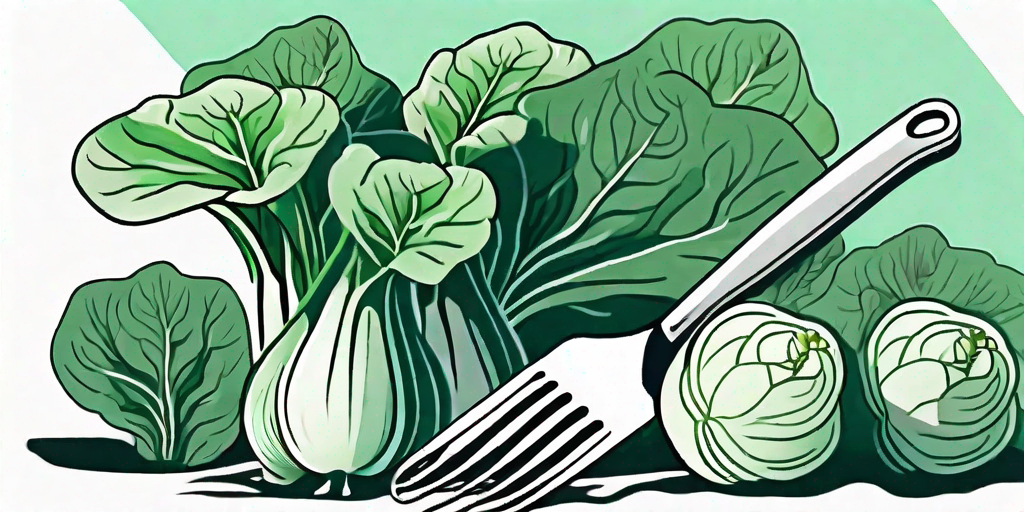
Welcome, green-thumbed enthusiasts and veggie lovers! If you're here, it's safe to assume that you're ready to take the plunge into the exciting world of harvesting bok choy. This Asian green is not only a superstar in the kitchen but also a delight to grow. So, buckle up and prepare to embark on a journey that will transform you from a bok choy novice to a seasoned pro.
Understanding the Bok Choy Basics
Before we dive into the nitty-gritty of harvesting, it's essential to understand what bok choy is. Also known as pak choi or Chinese white cabbage, bok choy is a type of Chinese cabbage that doesn't look like your typical cabbage. Instead, it has dark green leaves and white or pale green stalks. It's a staple in Asian cuisine and is celebrated for its mild flavor and versatility.
Bok choy is a cool-season crop, which means it prefers cooler weather and can even tolerate light frost. It's also a fast grower, reaching maturity in just 45 to 60 days. This makes it an excellent choice for those who are impatient to see the fruits (or in this case, veggies) of their labor.
The Nutritional Powerhouse
Not only is bok choy a delight to grow and eat, but it's also packed with nutrients. It's rich in vitamins A, C, and K, and also provides ample amounts of calcium, magnesium, potassium, manganese, and iron. Not bad for a humble leafy green, right?
Moreover, bok choy is low in calories and high in fiber, making it a great addition to any diet. So, while you're flexing your green thumb, you're also doing your health a favor. Talk about a win-win!
The Art of Growing Bok Choy
Now that we've covered the basics, let's get down to business. Growing bok choy is relatively straightforward, even for beginners. It's a hardy plant that can withstand a variety of conditions, making it a great starter crop for newbie gardeners.
Start by choosing a location with plenty of sunlight and well-drained soil. Bok choy prefers rich, loose soil, so consider adding some compost or organic matter to improve the soil structure. Once you've prepared the soil, sow the seeds about 1/4 inch deep and 1 to 2 inches apart. Water the seeds well and watch as your bok choy begins to sprout!
Dealing with Pests
While bok choy is relatively low-maintenance, it can attract certain pests, such as aphids and cabbage worms. Regularly inspect your plants for signs of these critters and use organic pest control methods, such as neem oil or insecticidal soap, to keep them at bay.
Remember, a healthy plant is the best defense against pests. So, ensure your bok choy is getting enough water and nutrients, and your plants will be better equipped to fend off any unwanted visitors.
Harvesting Bok Choy Like a Pro
Now, onto the moment you've been waiting for: harvesting. The beauty of bok choy is that you can harvest it at any stage. Young leaves can be picked for salads, while mature plants can be used in stir-fries and soups.
To harvest, simply cut the plant at the base using a sharp knife. If you prefer, you can also harvest individual leaves, starting from the outside and working your way in. Just be sure to leave the inner leaves intact if you want the plant to continue growing.
Storing Your Harvest
After harvesting, you'll want to store your bok choy properly to maintain its freshness. Bok choy can be stored in the refrigerator for up to a week. Just wrap it in a damp paper towel and place it in a plastic bag. For longer storage, consider blanching and freezing your bok choy.
And there you have it! With these tips and tricks, you'll be harvesting bok choy like a pro in no time. So, what are you waiting for? Get out there and start growing!
FAQs
When is the best time to plant bok choy?
Bok choy is a cool-season crop, so it's best to plant it in early spring or fall. However, if you live in a mild climate, you can grow bok choy year-round.
How often should I water my bok choy?
Bok choy likes moist soil, so water it regularly to keep the soil from drying out. However, be careful not to overwater, as this can lead to root rot.
Can I grow bok choy in a container?
Absolutely! Bok choy is a great choice for container gardening. Just make sure to choose a container that's at least 6 inches deep and has good drainage.
Conclusion
There you have it, folks! A comprehensive guide to harvesting bok choy like a pro. With a bit of patience and care, you'll be enjoying your own homegrown bok choy in no time. Happy gardening!











